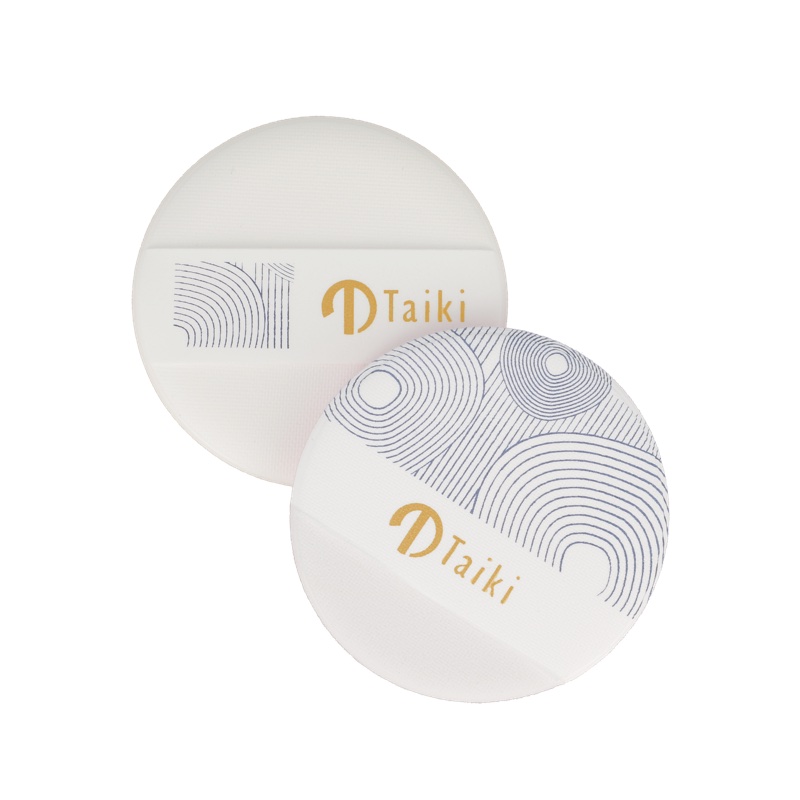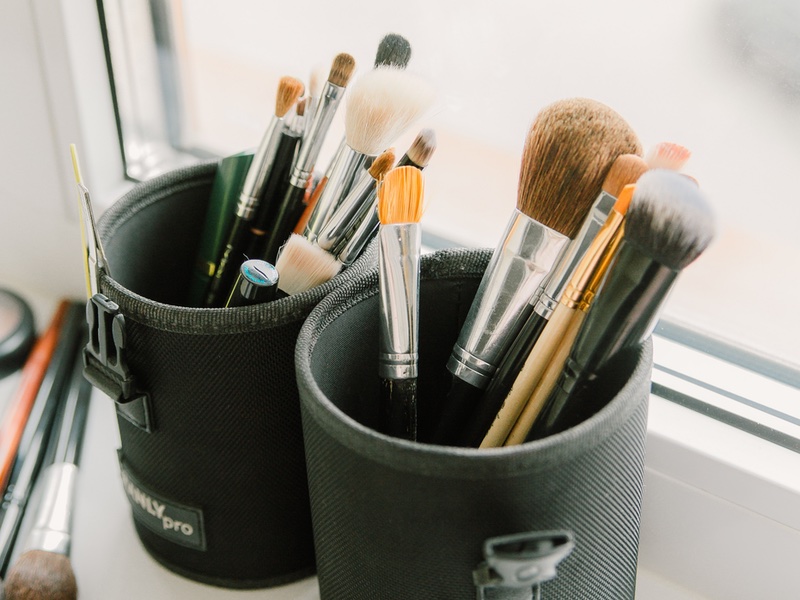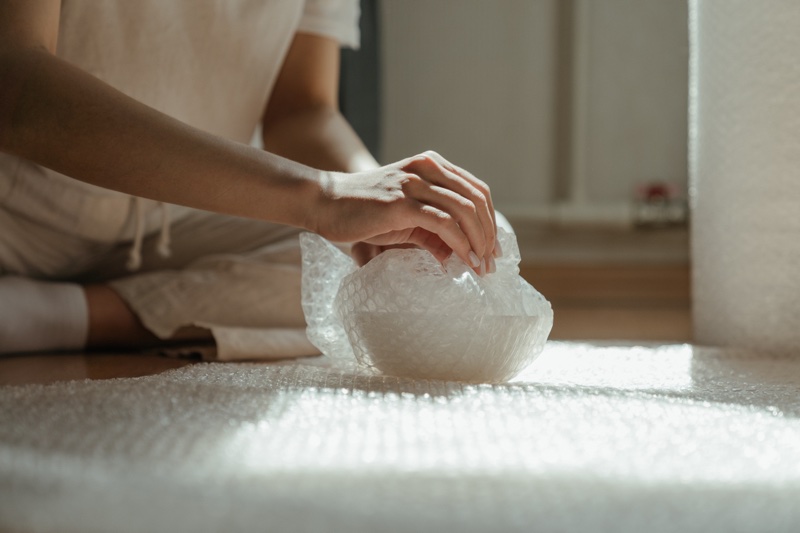Back in December 2019, scientists warned that nine out of ten make-up products, including mascaras, beauty blenders and lip glosses, were likely contaminated with potentially ‘life threatening’ superbugs, such as Escherichia coli and Staphylococci.
The group from Aston University, UK, said this was due to the fact that most beauty products are being used beyond their expiry dates and because consumers are not taking the time to clean them. The reality, according to researchers, is that these types of bacteria found in unhygienic applicators could cause illnesses such as skin infections and, if they come into contact with the eyes and mouth or cuts and grazes, even blood poisoning.
The study forewarned that consumers were ‘unwittingly’ putting themselves at risk, and called upon regulating bodies and manufacturers to do more to protect users by making expiry dates and cleaning requirements more prominent on beauty products’ packaging.
Fast-forward two months and the world was brought to its knees by a global pandemic, which reported its one millionth death of Covid-19 just two months ago, pushing potentially harmful bugs caught from unhygienic beauty products to the back of consumers minds.
However, while it might seem like Covid-19 has unwittingly steered importance away from such – what could even be described as trivial – issues, the pandemic has influenced a shift in culture behaviour, and it’s bringing hygienic beauty back into the spotlight.
Research giant Mintel revealed to Cosmetics Business that more than half of consumers in the UK are concerned about who may have touched a product’s packaging before they have and 30% take the time to wipe down packaging before using a product.
Meanwhile, a study conducted back in February by Dettol and Lysol maker RB found more than 50% of people worldwide are washing their hands more since Covid-19 gripped the world’s attention and 41% are using hand sanitiser – more than pre-pandemic.
In short, the germaphobic consumer has become the societal norm, and while embedding antibacterial agents into beauty products and packaging is no new innovation for the cosmetics sector, recent events have refocused consumers’ attention and more than ever a squeaky-clean beauty regime is what consumers demand.
Bacteria-breeding sponges
For years packaging manufacturers have worked on antibacterial solutions to protect beauty application sponges and make-up brushes from the detritus found at the bottom of make-up bags.
Beauty sponges, while being hailed for their blending qualities, in particular were named by researchers at Aston University as the beauty tool that is most susceptible to contamination due them being damp after use; thus creating an ideal breeding ground for bacteria.
Within its 80-year history of product development, French beauty manufacturer Taiki Cosmetics sought to tackle this flaw in beauty sponge production by offering a zinc pyrithione (ZPT) antimicrobial option for its sponges.

“ZPT is an antimicrobial agent, meaning that it has both antifungal and antibacterial actions, by blocking cell division of unwanted microorganisms,” Taiki’s Marketing & Communications Director, Alix Bellanné, tells Cosmetics Business.
“We added this antimicrobial agent to neutralise bacteria from skin biofilm or [bacteria] which comes from the external environment – particularly brought in by the hands – preventing bacteria from growing in applicators.”
When asked why the company opted for ZPT the company explained that other components for antibacterial agents had influenced the properties of its sponges.
“We chose ZPT at Taiki because it has proven its worth for several decades in sponge production. It is the perfect match between industrial constraints, long-term proven efficacy, even after repeated washes, and economic viability.
“Other antimicrobial agents have been tested like silver or copper, but we did not retain them because they alter the mechanical properties of sponges and their colour.”
However, the company teased its R&D team is working on the “next generation” of antimicrobial protection. “In our continuous improvement process, Taiki's R&D team is already working on the next generation of antimicrobial protection to anticipate some regulation evolutions.”
The silver lining
Also having a moment in the hygiene beauty arena, is James Cropper’s silver-treated PaperGard packaging. Since the pandemic hit, the British firm has seen increased demand for its antimicrobial papers from customers, and encouraged the group to branch into new sectors.
“Most hygienic packaging solutions we have noticed have been within the food sector, however, the recent pandemic has shifted interest across all packaging touchpoints with brands looking at ways to protect consumers, increase confidence and propel business forward,” says the company’s Marketing and Technical Director, Richard Bracewell.
Introduced in 2006, the papers are treated with Biomaster antimicrobial silver ion technology in order to inhibit the growth of bacteria. “The silver ion treatment in PaperGard continually works to prevent the growth of microorganisms, effectively reducing contamination levels on the surface,” adds Bracewell.
“Unlike antibiotics, microorganisms are unable to build up a resistance to the way in which silver ions disrupt their growth. In addition, silver ion technology has proven effective against MRSA, Salmonella, Legionella, Campylobacter, E.coli, Vancomycin-resistant Enterococcus and norovirus.”

The application can also be incorporated into James Cropper’s Tailor Made service application to be used in a host of packaging applications, ranging from premium boxes displayed in-store to retail carrier bags.
Amreen Bashar the lead scientist behind the study from Aston University confirms to Cosmetics Business that both zinc and silver display effects against the growth of organisms such as MRSA, candida, Bacillus and Klebsiella.
However, Bashar warns the overuse or misuse of these metal nanoparticles are not future-proof and could have consequences long-term. “There is a fear that if we overuse these metal nanoparticles, we may start to see microbes that show resistance; like we have seen bacteria become resistant to antibiotics.”
And she is not alone in her fears. Studies have quoted The World Health Organisation (WHO) and political institutions raising similar concerns about the safety of nanoparticles in consumer goods. In 2019, the European Commission’s Scientific Committee on Consumer Safety updated its guidance on the safety assessment of nanomaterials in cosmetics.
“A number of issues and questions have been identified by the SCCS regarding the types and quality of the information and data that must form part of the safety dossiers on NMs [nanomaterials]. In view of this, the SCCS published a memorandum (SCCS/1524/13 Revision of 27 March 2014) to highlight the importance of relevance, adequacy and quality of the data provided in a safety dossier on NMs,” the guidance said.
Meanwhile, research by one Imperial College lecturer and vascular nurse at Charing Cross Hospital, London, noted the common belief that bacteria is unable to develop a resistance to silver ions is not always the case. The duo cited clinical microbiologists who are aware that some silver-resistant bacteria can occur in a variety of circumstances and environments.
With this information in mind, Taiki Cosmetics commended another antibacterial agent that could be used in make-up applicator fibres.
The capabilities of charcoal
Activated charcoal is well-known for tackling the build-up of bacteria by absorbing harmful microbes from wounds. It is also commonly used in the oral care category to reduce bacteria build-up on toothbrushes bristles.
And packaging innovator Cosmogen is one company adopting this technology.
The company’s charcoal-infused brush line can be used with creams, gels and solid soaps, and are designed to preserve and protect the fibres from bacteria. According to the firm, the brush's strength lies in the combination of antibacterial efficacy and penetrative ability, allowing the antibacterial effect to work deep down in the pores, even in hard to reach places.

“Consumers want safety, wellbeing and environment-friendly products more than ever,” says the company’s Marketing and Communication Director, Maud Lelièvre.
“The need to protect formulas has increased in the past years, in parallel with cosmetic regulations which aim to limit and reduce preservatives in formulas. The Covid-19 crisis has also deepened the need for hygiene.”
“The charcoal was an interesting agent because of its ability to delay proliferation of bacteria.
“The charcoal was the first step forward. Since it was launched, new antibacterial agents were found and we now have genuine antibacterial solutions. This is a "new generation" of agents which are therefore much more efficient.”
Meanwhile, earlier this year, Cosmogen introduced a ‘safe contact’ 5-brush set to its portfolio, which is said to offer a global hygienic solution for skin care application. However, the company would not disclose to Cosmetics Business the antibacterial agents these products are infused with.
The benefits of cleaner applications are not just quoted to stop the spread of germs. US-based packaging provider Anisa International says cleaner make-up brushes and applicators ensure better performing products.
Group founder and CEO Anisa Telwar Kaicker tells Cosmetics Business: “Cleaning and care of make-up brushes have been proven to optimise brush performance and provide important benefits, such as lengthening the life of brushes, preventing the build-up of dirt and bacteria, enhance colour application to the skin and perfect product placement.”
Not a free pass for plastic

While innovation is taking place far and wide in the sector, concerns have been raised that beauty brands could fall back into old habits in the name of hygiene.
And the age old enemy of the environment is plastic pollution, which is something Benjamin Punchard, Mintel’s Global Packaging Insights Director, is most apprehensive about.
“I’m pretty sure we’re likely to see the continued use or maybe even more sporadic use of secondary cartons,” he notes. “So, there will be a clear separation between that and the primary packaging you actually use when you get home. That separation is going to become more and more important.”
But he encourages that this should not be a free pass for plastic: “Brands swaddling everything in plastic is something consumers are going to question.”
He continues: “What I think is more likely is that brands will consider how people use products and offer packaging solutions that can give the impression or feeling of keeping a product safe.
“What I mean by that, is the increase of bigger peel-off films that represent a hygiene barrier. Bigger tabs that customers can peel off so customers are touching less of the pack itself will be preferred as they can be removed.”
It’s clear there are multiple options for beauty brands to adopt as the hygiene-conscious consumer becomes mainstream.
Whether or not brands want to take the route of secondary plastic packaging or opt for an antibacterial agent for beauty tools and packaging, it’s clear the pandemic has provided food for thought for many companies.
Without the risk of greenwashing, brands need to identify their customers’ primary concerns and speak to those worries.

